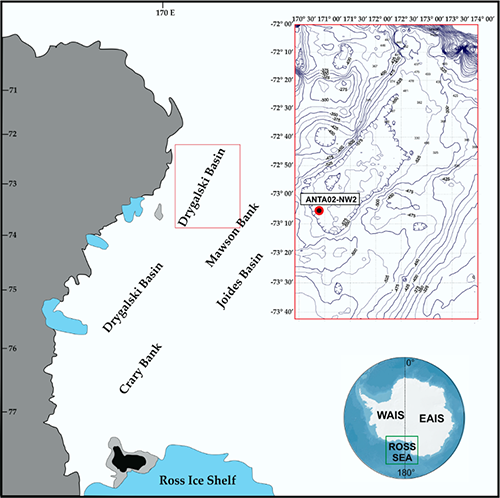Ostracod and Foraminifer Responses to Late Pleistocene-Holocene Volcanic Activity in Northern Victoria Land as Recorded in Ross Sea (Antarctica) Marine Sediments

Salvi G., R. Melis, P. Del Carlo and A. Di Roberto (2022).
Geosciences, 13(2), 35.
https://doi.org/10.3390/geosciences13020035
Abstract
The impacts on ostracods and foraminifers caused by three Late Quaternary ashfalls of different intensities and recovered in the ANTA02-NW2 core sediments (Drygalski Basin, western Ross Sea) were analysed for the first time. Albeit with different timing, both associations demonstrated similar response patterns associated with the deposition of material from volcanic eruptions. In particular, based on the palaeontological evidence, it was possible to divide the cores into four intervals/phases recording the evolution of the ecosystem before and after the deposition events: (1) Pre-extinction phase (high abundance and high diversity values). (2) Extinction phase, characterised by the complete disappearance of ostracod fauna; the foraminiferal assemblage, although not entirely absent, records extremely low values of abundance and diversity (survivor assemblage). (3) Recovery phase (increasing abundance and diversity values), characterised by the recolonisation of some opportunistic taxa; species such as Australicythere devexa and Australicythere polylyca dominate the ostracod assemblage. (4) Post-extinction phase (high abundance and high diversity values), with the return to an environmental equilibrium characterised by the colonisation of specialised taxa such as Argilloecia sp., Cytheropteron sp., Echinocythereis sp., and Hemicytherura spp. Our results may aid in the understanding of how communities (i.e., ostracods and foraminifers) recovered after the impact of direct deposits of volcanic ash into ocean waters. The mechanisms by which disappearance and/or mortality was induced are still not clear. The release of toxic metals during the reaction of the volcanic ash with seawater, the resulting chemical alteration in the seawater, and the change in pH, together with the possible suppression of planktonic organisms, may have caused the two main extinction phases recorded by the ANTA02-NW2 core sediments.


Devi effettuare l'accesso per postare un commento.